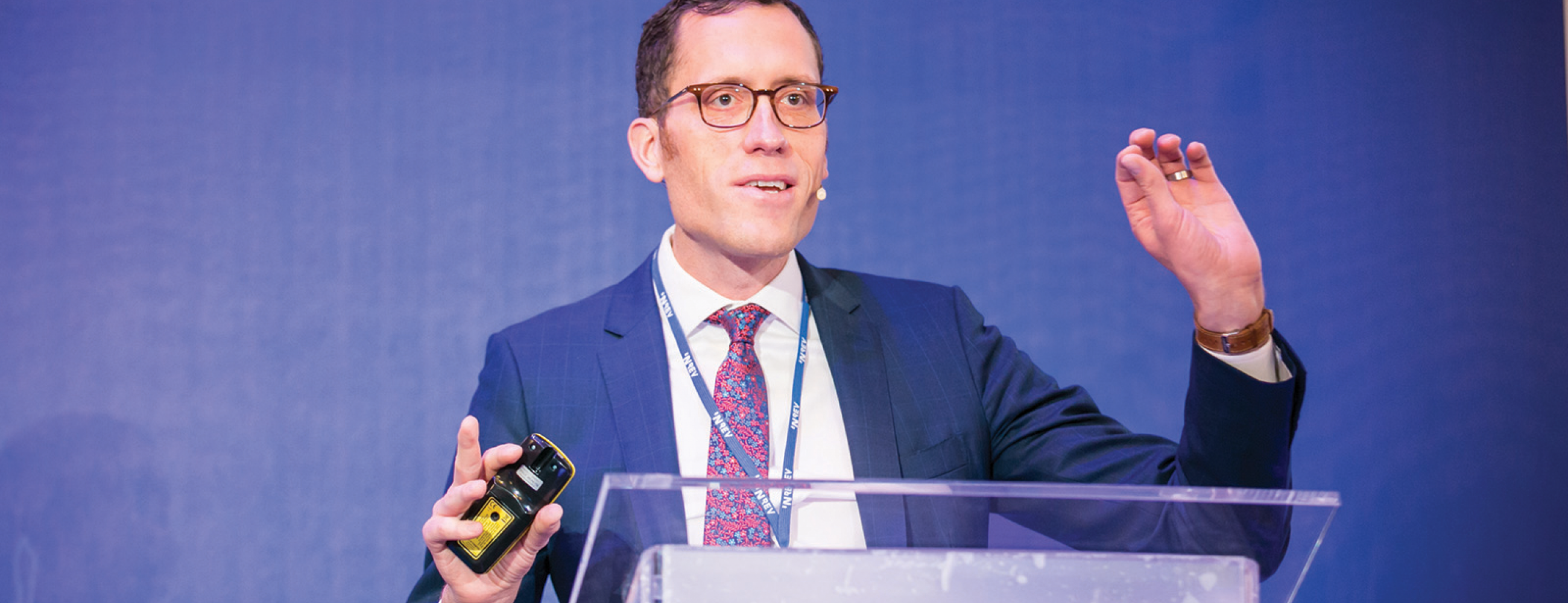Young Professionals Conference Budapest 2018: presentation summaries
INREV's eleventh Young Professionals Conference Budapest brought together the next generation of industry leaders, two-thirds of whom were attending for the first time. Technology and data were high on the agenda, but also the blurring of sectors with a particular look at co-living and co-working.
The conference was moderated by Iryna Pylypchuk, Fidelity International and Peter Hayes, PGIM Real Estate. Over the course of the conference there was evidence that the industry is changing. A shift towards a solution-driven market is occurring. Real estate has to offer more to the end user. And the industry must look beyond resilience, and actively embrace change.
We would like to thank our sponsors: a.s.r. real estate, CBRE Global Investors, and Landmark Partners.
Stay tuned to INREV News for the location and date of INREV's Young Professionals Conference 2019.
Trade offs: threats to global growth - Philipp Coggan

Philip Coggan, Bartleby columnist of The Economist, opened his keynote speech with a note of optimism, that England would advance to the world cup quarterfinals, before moving onto a gloomier outlook for the European economy. Alluding to a series of forward leading indicators and surveys that suggest the slowing momentum in European economy, he then outlined more fundamental issues – including the threat of a global trade war, the rise of populism and immigration – that are likely to change the course of growth for Europe.
To aid growth in Europe, he offered a series of policy recommendations:
- Immigration can ease the burden that is associated with an ageing population
- Labour market reforms, regardless of how unpopular they might be, will enhance productivity
- Investment in education should be on the minds of policymakers
As a final note, his best guess for Europe is that the region will muddle through, with unpleasant moments occurring in between.
Repeat business: how is this cycle different? - Brian Klinksiek

Brian Klinksiek, Director of European Investment Research at Heitman, discussed the anthology of the latest real estate cycle and how it compares with past cycles.
His main thesis is that this cycle is the same and different. Compared to pasts cycles, the ‘bull market is in everything’ and peaks are above previous heights. However, this time round:
- sectors' performance diverges
- market leverage levels are moderate
- supply is remarkably constrained with some exceptions
- interest rates are the lowest on record
- trade war dangers are hindering investor sentiment
More importantly, there is a sway of structural and secular changes that affect the property market that investors and investment managers must recognise.
Blurring the lines: the evolving shape of real estate - Jill Xiaozhou Ju and Gustaf Lilliehöök

Gustaf Lilliehöök, NREP and Jill Xiaozhou Ju, The Collective provided the audience with examples of how real estate can become better customer-, product-, and service-oriented. The session opened with two key facts: 90% of our lives are spent in buildings and 1/3 of humanity’s resource consumption is caused by real estate. Despite such high stakes, the real estate industry is still lacking innovation.
According to Gustav, the era of the ‘buy cheap sell dear’ investment mentality is coming to an end, and to stay ahead the curve we must switch to a product mentality – produce a better product that is more valuable to your customers. Providing real estate solutions that address customers’ needs is a great opportunity to improve peoples’ lives and create value for investors, and he provided several examples of how NREP is doing this in logistics, residential, student housing, retail, sustainability and more.
Jill noted that due to rising trends (high living costs, increasing number of single-person households, concentration of jobs and talents), co-living is becoming more popular among urban residents. The Collective uses a member-driven approach that allows them to understand their members and develop, design and operate relevant co-living spaces for them. They track and analyse anonymous data to create a shared living experience through well-designed space and sense of community.
The built environment: impact on human health and welfare - Ann Marie Aguilar

Discussing the importance of ‘placing people in the center of real estate’, was Ann Marie Aguilar, the Director of Operations for Europe at the WELL Building Institute. While in the past, workforce health was measured mainly by visible physical injuries to employees, in the modern workforce, dominated by the service economy, impacts to health, wellbeing and productivity are not as easily approachable.
The WELL Building Institute looks at ten key considerations that factor into impacts on human health: air, water, nourishment, light, movement, thermal comfort, sound, material, mind, and community. These factors overlap and affect work performance and productivity in a myriad of ways.
Incorporating health and wellbeing is not a simple task, however there is abundant evidence that it provides tangible returns in both productivity value and long-term tenant relationship strength. Technology and data are enabling better precision and effectiveness in measuring the benefits of health and wellness of people than ever before.
Inside information: how will tech transform real estate - Dan Hughes

Dan Hughes, Co-founder and CEO of LIQUID Real Estate Innovation, presented a journey through technology, focusing on four key themes and realities that companies should embrace:
- Technological developments are bringing increased focus to occupiers. Occupiers are becoming the centre of attention and building owners are increasingly paying attention to their best interests in terms of amenities.
- Sectors are blurring. For example, with the rise of shared office space and the dissolution of previous jobs into a variety of individual tasks, the office sector is becoming more like the hospitality sector.
- The industry is featuring changes in speed. Technology is changing the speed that processes and tasks can be completed.
- Technology is allowing the industry to better understand value. This can be tied to the multiple factors listed above, allowing industry practitioners to better enhance the value of assets respective to the trends of the market.
Dan concluded saying 'we shouldn’t look at how technology is changing jobs, we should rather look at how technology is changing the tasks that jobs are composed of.' Understanding both the detailed and indirect changes technological innovation brings will enable successful adaptation to trends of the future.
Shaping cities of the future - Hans de Jonge

In a bird’s eye view, Hans de Jonge took the audience through a journey of forces what will shape the future of cities. His key hypothesis was that individual buildings are meaningless if they don’t belong to the city. A city or a town is what makes buildings function and hence valuable.
Hans then commented on the importance of wealth and wealth inequality, demography, latest technological advancements, mobility and the importance and size of current building stock.
He went on to offer a few suggestions for conference attendees:
- City planning is like gambling – creative optimisation is paramount while benign, the rules are something of a necessity when creating communities
- City labs are vital in discovering the unknown
- Don’t get sucked into excel sheets – think about the bigger picture and the role you are playing in the world
Property tours

After an inspiring conference and cultural evening programme, delegates had the choice of two property tours to put their learning into practice in Budapest.
Exchange Palace
This grand Beaux Arts monumental building at the Liberty Square was built in 1905 as the Budapest Stock Exchange. It was designed by the famous Hungarian architect Ignác Alpár. The 50,000 m2 palace is centrally located in the heart of Budapest’s financial and government district. Over the coming years it will be redeveloped offering first class retail and office space.
Corvin District
This up-and-coming district in the heart of Budapest is Central Europe’s largest (22-hectare) regeneration project. It is the city’s largest ongoing development scheme that is transforming a once rough neighborhood into one of the most desired locations in the city. The tour combined open and covered shopping, entertainment, leisure, sport and eating facilities.